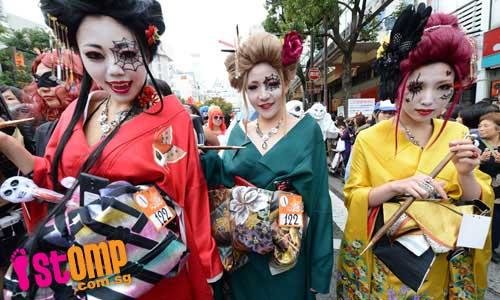Origin
Halloween was celebrated by the Celtic inhabitants to mark the beginning of the New Year celebrations. Pope Gregory IV marked November 1 as All Saints Day (Ankerberg, Weldon &Burroughs 10). The Druids were the priests, and the educated class of the Celtic group.
Halloween was first celebrated by the ancient Druids who originated from India. The Celtic group inhabited northern France, the United Kingdom, and Ireland. Ankerberg, Weldon & Burroughs note that the Halloween has borrowed practices of “more folk customs the world round than will ever be sorted out” (9).
Dia de Los Muertos is considered as the Day of the Dead. It was celebrated by the Toltecs, Mayans, and Aztecs for many centuries before it was incorporated into the Catholic church beliefs.
The Catholics recognized saints, and those who died in their childhood they considered as “little saints” (Untiedt 148). The dates for Halloween and Dia de Los Muertos coincide. According to Untiedt, “All Souls Day, or as it is known in Mexico and the American west, El Dia de Los Muertos” is celebrated formally on November 2.
Symbols of Celebration
The Dia de Los Muertos celebrations are similar to the Celtic beliefs that the spirits of the dead are roaming around the villages during such times. Those who walked at night had to wear masks to trick the ghosts. People lit fire to scare away ghosts (Untiedt 147).
The Celtic groups believed that the God of the dead was converting evil souls to animals or incarnating souls that were considered good. This happened at the beginning of the year, which was in November according to their religious belief (Ankerberg, Weldon & Burroughs 10).
Role of the celebrations
Halloween is considered a holiday of “rebellion, reversal, and resistance” as presented by Maclain (73). Initially, it was considered a time of feasting, courtship rituals, and themed costumes in the 18th and 19th centuries (Maclain 71).
Halloween celebrations were later followed by acts of violence by the young adults in the U.S.A. until it was reinvented by the aged. Halloween was at first celebrated only by adults but currently these are children and young people who celebrate the holday most of all.
In the traditional setting, the Celtic group believed in appeasing the God of Hades. This made them sacrifice humans until it was banned by the Romans in 61 A.D. (Belk para. 4). According to Belk, “ after the feast, the ghosts were led out of town by costumed villagers” (para. 5).
The people laid more emphasis on treating and tricking ghosts or the devil. In modern practice, children trick adults for gifts. This follows the example of the Irish drunkard who is believed to have tricked the Devil for an alcoholic drink, and climbed an apple tree. Most cultures emphasize the need to overcome the fear of the dead through Halloween and Dia de Los Muertos celebrations.

This image above represents an illustration of the wya Halloween can be celebrated across different nations. In the given picture it is Japan. The costumes are used to gull ghosts; the costumes are stylish and expensive. The crowd of people is huge meaning that those who died happily celebrate their presence on earth
Works Cited
Ankerberg, John, John Weldon and Dillon Burroughs. The Facts on Halloween, Oregon: Harvest House Publishers, 2008. E-book.
Belk, Russell. “Halloween: an Evolving American Consumption Ritual”, Advances in Consumer Research Vol. 17 (1990): 508-517. Web.
Maclain, Adrienne. Playing on the Edge: Performance, Youth Culture, and the United State,. Ann Arbor: ProQuest Information and Learning Company, 2006. E-book.
Untiedt, Kenneth. Death Lore: Texas Rituals, Superstitions, and Legends of the Hereafter, Denton: University of North Texas Press, 2008. E-book.